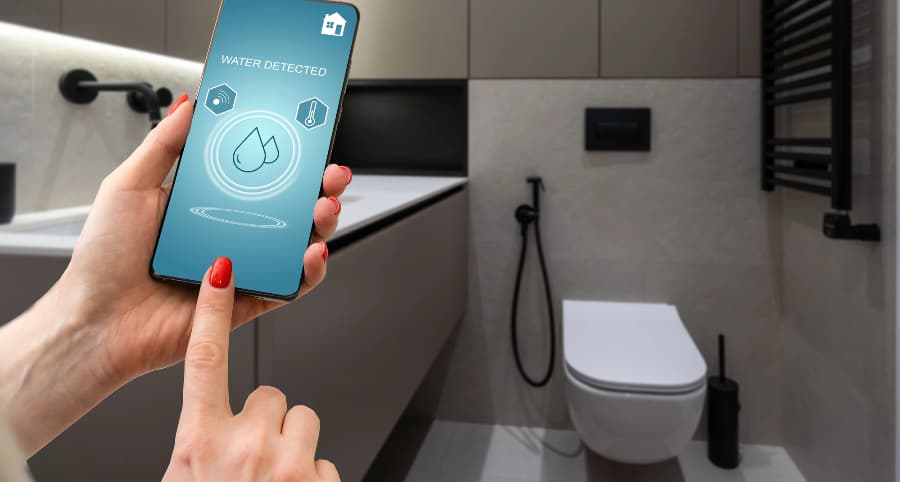How does a water sensor work and why use one with your Tucson smart home?

One tiny leak at your property can result in significant problems and thousands in damage. You have to safeguard against this threat; thankfully, there’s a simple way to achieve this. A water sensor is an economical, simple, and effective solution. Learn how they work and why you might integrate water sensors into your Tucson smart home.
How water sensors safeguard Tucson your home
Water infiltrates homes in many ways, whether from an appliance breakdown, plumbing problem, storm-related event, or just human error. However it happens, you must know right away, and this is why water sensors are important. But how precisely do they work?
The majority of water sensors are conductive and operate with a pair of electrodes. When water enters the space between the electrodes, an electrical connection is formed, activating your alarm. You’ll also come across capacitive sensors that emit an electrical field. Your alarm activates when water touches the conductive parts of these devices and disrupts the field. Optical sensors using infrared LED light are another possibility.
Some water sensors give you more
Certain innovative water sensors provide even more protection as they feature incorporated temperature sensors. This is a helpful way to prevent frozen pipes. If there’s an extreme decrease in temperature, you’ll know immediately. Taking action before pipes burst will save you from water damage and expensive repairs.
Why integrate water sensors into your Tucson smart home?
When water problems occur, you have to be warned immediately. You can achieve this goal by incorporating water sensors into your smart home. Whether you’re there to hear the alarm or somewhere else, you’ll receive an instant notification on your cell phone. As an added benefit, your round-the-clock monitoring specialists will be informed. Every moment counts in a water emergency to control the damage and interruption to your family.
Where should you place water sensors?
Any location susceptible to an influx of water is an appropriate position for water sensors. Install them in these spots:
- Bathrooms: Attach at the back of toilets or close to tubs.
- Basements: Water frequently seeps into lower floors through damaged walls or as a result of heavy rain or malfunctioning sump pumps.
- Next to water heaters or appliances: Any water-connected appliance could eventually leak.
- Below sinks: Water sensors are perfect for discovering leaky pipes in place not easy to see.
- Attics: Identify roof leaks promptly and avoid costly repairs.
Request water sensors with your Vivint smart home
Give your residence the complete protection it requires with advanced tools from Vivint. Our water sensors in Tucson link to your Vivint smartphone app to deliver instant updates when your alarm is triggered. You also benefit from incorporated temperature sensors to avert pipe freezing. Explore the smart home tools available in Tucson by dialing (520) 655-6492 today.
